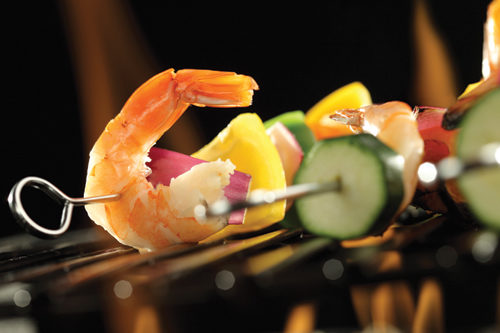Nothing says “summer” like a great cookout. Hands-on, creative retailers can help shoppers put two and two together to create ideas for a green and healthy meal. Here are some tips for how.
Sizzlin’ Flavor
You may already create a grilling-themed endcap during your summer months, complete with marinades, dry rubs and condiments. Up the ante this year and give shoppers some advice for using these flavoring agents (and maybe trying something new).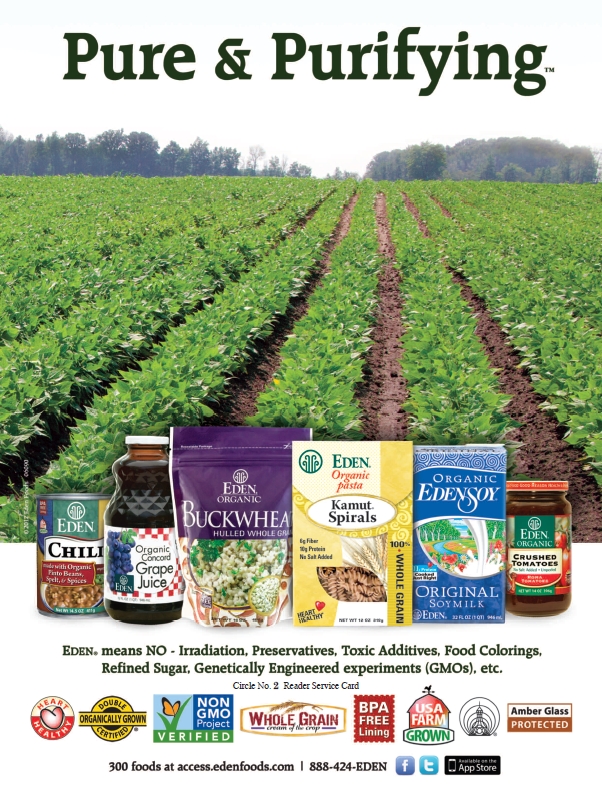
Let’s start with dry rubs—mixtures of herbs and spices for massaging onto meat. Rubs have two jobs: they add taste and a flavorful crust to meats and vegetables. Grilling will activate the flavor, according to Tom Havran, food guru at Frontier Natural Products Co-op and Simply Organic, Norway, IA: “During grilling, the meat renders its fat and cooking juices to combine with and activate the flavors and volatile oils in the rub to form a savory, caramelized crust.”
Shoppers that burned a rubbed steak in the past may be leery of trying again. Not to worry. Havran offers some tips for avoiding an unintended singe. “Use dry rubs away from direct flames, which can quickly burn the seasoning mix, replacing the subtle flavor profiles that you are trying to build with a charred, bitter crust,” he says, adding, “Low and slow is the key.”
Some cuts work especially well with rubs, says Rocky Stubblefield, brand ambassador for Stubb’s Legendary Bar-B-Q, Austin, TX. “Choose dry rubs for larger cuts of meat like briskets, pork shoulders and ribs,” he advises. Other options are butterflied fowl, pork butt and brisket.
Another grilling expert, Dennis Sherman, founder and creator of DennyMike’s Sauces and Seasonings, Westbrook, ME, likes to use dry rubs “for getting to difficult parts of the meat.” An example is under chicken skin.
For clients that enjoy slow-cooking barbeque, Sherman suggests moving from dry rubs to sauces. “I find that a sauce I can apply repeatedly throughout the cooking process flavors very well and often creates a caramelized coating that’s delicious. I always encourage BBQ novices to experiment with both [dry rubs and sauces].”
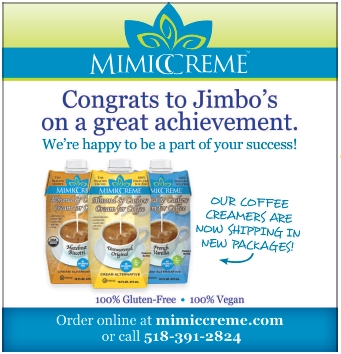 Another option is marinades, which Havran recommends for quick-cooking flat cuts of meat. He explains that a good marinade will incorporate an acid (from vinegar, wine, beer or fruit juice) to break down and tenderize meat. This helps the flavors infuse down into tougher meats like skirt, flank and round steaks. Stubblefield adds that poultry, like bone-in turkey and chicken, are good choices for marinades.
Another option is marinades, which Havran recommends for quick-cooking flat cuts of meat. He explains that a good marinade will incorporate an acid (from vinegar, wine, beer or fruit juice) to break down and tenderize meat. This helps the flavors infuse down into tougher meats like skirt, flank and round steaks. Stubblefield adds that poultry, like bone-in turkey and chicken, are good choices for marinades.
Havran offers this advice: pat the meat dry of excess marinade before it goes on the grill. Second, discard the used marinade, but reserve some of the original marinade that hasn’t touched the raw meat for basting. This helps “form a savory glaze in the final minutes of grilling,” he says.
Shoppers can also try combining rubs and marinades. Stubblefield recommends marinading meats first, patting dry and then adding a complimentary dry rub.
Here’s a great tip for shoppers that want to add flavor with double-duty products: use salad dressing as a marinade. “Dressings that contain vinegar, lemon juice and herbs and/or spices, such as Annie’s Organic Roasted Garlic, will soften meat fibers and enhance flavor,” says Andrea Stupka, brand  manager at Annie’s, Inc., Napa, CA. “They’re especially good on less expensive cuts of meat.”
manager at Annie’s, Inc., Napa, CA. “They’re especially good on less expensive cuts of meat.”
Havran agrees shoppers should think beyond traditional marinades, rubs and sauces. He suggests herb butter and flavored oils infused with herbs, spices, garlic and shallots. These techniques, says Havran, “work especially well for delicate items that don’t feature much of their own fat component such as extra-lean grass-fed beef, poultry, fish and vegetables. Also, oils and butters are more effective carriers for delicately flavored seasonings such as parsley, chive, tarragon, chervil, etc.”
On the tip of your tongue. Grilling is a great way to experiment with flavors. Be sure you stock up on trending flavors to meet your clients’ preferences. “Flavor combinations are all over the map...literally. They still like heat in Texas, vinegar in Carolina and sweetness in New England,” says Sherman.
But according to Stubblefield, an overarching trend is sweet and spicy, while Havran suggests deep, unique base notes (like coffee and cocoa).
To this, Stupka adds, “Ethnic and regional flavors are still on trend because American consumers consider them to be a healthy and sophisticated way to conveniently transform everyday meals into culinary creations.”
Another trend: flavored, artisan salts and sugars. People are more interested in cracking/grinding than pouring out a pre-ground form.
Last, Havran adds, “Another trend is to create Umami, (the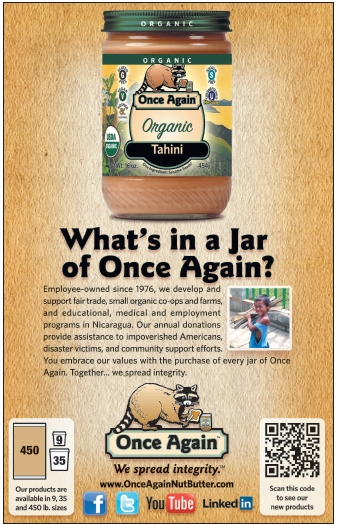 5th flavor) with vegan marinade components like dashi, tamari, miso, shitake mushrooms and sea vegetables such as kombu and dulse.”
5th flavor) with vegan marinade components like dashi, tamari, miso, shitake mushrooms and sea vegetables such as kombu and dulse.”
The Prime Choice
A solid meat entrée is typically the focal point of a grilled dinner. Use this as a chance to remind shoppers of why organic, humanely raised meat is a great choice for the environment and one’s health. Says Havran, “Organic meats are a healthier choice, contain no hormones, are generally leaner and have a better taste because they’re fresher.”
The fact that organic meats don’t contain antibiotics is one of the strongest reasons for choosing those products, according to Christopher Ely, farmer liaison and co-founder of Applegate Farms, Bridgewater, NJ. “The overuse of antibiotics in food animals is leading to antibiotic resistance in humans.”
If you want to avoid antibiotics, train shoppers to read labels. Says Ely, “Unfortunately, meat and poultry labeled ‘natural’ most likely comes from animals treated with antibiotics, which doesn’t seem to make a lot of sense. But according to labeling rules, ‘natural’ just means minimally processed. All Applegate products are antibiotic-free, even our natural line because we believe the term natural should include how the animal was raised.”
When picking foods like sausages and hot dogs, shoppers may also be concerned about added sodium nitrate, which serves as a preservative and flavoring agent. This substance becomes sodium nitrite during the curing process. “When cured meat is charred on a grill or open flame, the nitrite can be converted into potentially carcinogenic nitrosamine compounds,” says Havran.
So, offer hot dogs and sausages that don’t have any extra nitrates. Rather than adding extra nitrates, like many conventional brands do, companies like Applegate Farms flavors and preserves bacon, hot dogs and deli meats with ingredients like celery juice and sea salt to cure meats. Ely points out cured  products won’t be 100% nitrate free. “Nitrates (NO3) are naturally occurring compounds that are created when plants break down nitrogen during photosynthesis. When nitrates come in contact with certain bacteria they break down into nitrites,” he states.
products won’t be 100% nitrate free. “Nitrates (NO3) are naturally occurring compounds that are created when plants break down nitrogen during photosynthesis. When nitrates come in contact with certain bacteria they break down into nitrites,” he states.
On the Side, Please
Potato salad, coleslaw, chips and deviled eggs threaten to sabotage a healthy grilled chicken meal. As an alternative, Stupka again raises the option of low-fat salad dressings, which can “quickly dress up your old standbys, like salad greens or potato salad…Don’t be afraid to break away from convention and experiment.”
Of course, grilled vegetables are a tasty and healthy way to enhance a barbecued dinner. Says Stubblefield, “Grilled vegetables are a great alternative! Diced squash and carrots will grill up nicely, and adding some diced sweet potato to that mix will make for a hearty side dish. Finish the dish with just a thin drizzle of honey while the veggies are still hot and toss to coat. Also, asparagus holds up really well on the grill, and the char marks add beauty and flavor.”
|
Select Grilling Offerings Annie’s: BBQ sauces (Original Recipe Organic BBQ Sauce, Smokey Maple Organic BBQ Sauce, Hot Chipotle Organic BBQ Sauce, Sweet & Spicy Organic BBQ Sauce). Dressings as marinades (Lite Herb Balsamic, Lite Honey Mustard, Raspberry Balsamic, Organic Red Wine & Olive Oil, Organic Roasted Garlic, Organic Sesame Ginger, Organic Shiitake Sesame). Applegate Farms: Refrigerated and frozen products including hot dogs (organic and natural beef, turkey or chicken), chicken and turkey sausages (Sweet Italian, Spinach & Feta and Fire-Roasted Red Pepper) and organic beef and turkey burgers. DennyMike’s: Sauces (Sweet ‘n Spicy, Mesquit-o Madness, Hot ‘n Nasty, Carolina-Style) and Seasonings (Chick Magnet, Sublime Swine, Pixie Dust, Cow Bell Hell, Fintastic). EcoQue: EcoQue Portable Grills, EcoQue Window Grills and EcoQue Wood Fired Pizza Oven and Smoker. Frontier/Simply Organic: New Frontier Salt-Free Seasonings (All Purpose, Garlic & Herb, Onion & Herb, Lemon Pepper, Southwest Chiptole, Carribean Citrus), Frontier Bulk Grill Rubs (Steak & Chop Grilling Rub, Poultry Grilling Rub, and Seafood Grilling Rub), Simply Organic Grilling Seasons (Orange Ginger, Citrus ‘n Herb, Steak Seasoning, Chicken Seasoning, Spicy Steak Seasoning, Seafood Seasoning, and Vegetable Seasoning). Stubb’s Legendary Bar-B-Q: Stubb’s BBQ sauces (Sweet Heat, Original, Spicy, Smokey Mesquite, Honey Pecan and Hickory Bourbon), Stubb’s Marinades (Texas Butter Injectable, Chipotle Butter Injectable, Beef, Chicken, Pork, Moppin’ Sauce, Wing Sauce, Texas Steakhouse) and Stubb’s Spice Rubs (Rubs: Bar-B-Q Rub, Pork Rub, Beef Rub, Chicken Rub and Steak Rub). Sunshine Burgers: Four varieties of veggie burgers. Tandoor Chef: The Tandoor Chef Vegetable Masala Burger. |
Sherman says he transforms coleslaw with his company’s vinegar-based Carolina-Style sauce “and a lot less mayo than traditional recipes—that cuts out a lot of extra calories.” He says a little spice (like DennyMike’s Pixie Dust and Fintastic) and olive oil go a long way to adding some pizzazz to grilled vegetables.
Speaking of customizing, Havran says consumers can make a “quick pickle” at home by adding a little salt, sugar, wine vinegar and seasoning to seasonal vegetables. “As your quick pickle is chilling and crisping in the fridge you can be grilling,” he states.
Another obvious way to add some veggies is with a veggie burger. Cole Jones, general manager, Sunshine Burger, Fort Atkinson, WI, feels “an organic whole food meat alternative is an excellent way to simultaneously eat healthy and do healthy…As a plant-based whole food, they have a smaller ecological impact than an animal based burger, making them an eco-healthful choice.”
But can they survive the grill without sticking and turning to mush?
Havran says veggie burgers can be tough to sear on an open flame “because they generally lack the elastic proteins and lubricating fats that make meat so resilient on the grill."
But there are a few tricks. He suggests thawing frozen patties first and adding moisture with a mist of water, marinade glaze or a light basting with infused vegetable oil as they cook.
Sherman suggests another technique: using a wire sheet or rack with small holes that keep the burgers from getting damaged during the flip. Or, make sure the grill grate is coated with cooking oil first.
You can also lock in moisture and up the nutritional value, says Stubberfeid, by topping patties with peppers and onions during grilling to help them absorb moisture and keep juicy.
Jones feels that veggie burgers often come fully cooked and taste best without direct-heat cooking. Those craving a little oomph can try flavored varieties like South West or Tex Mex Sunshine Burgers.
Green Grilling
Between the fuel and the plastic utensils, grilling has the potential to not be very green. Retailers can help shoppers make sure their next cookout is as eco-friendly as possible.
First, consider sustainably harvested charcoal. Most traditional charcoals are a combination of products like sawdust, corn starch and lighter fluid. When burned, they can add more carbon monoxide to the environment than propane plus harmful volatile organic compounds.
As an alternative, Nature’s Grilling Products sources its 100% natural charcoal from regions that meet standards for sustainability. The firm ensures enough new trees are planted to offset the carbon emitted from using its charcoal.
Sherman suggests smoke cooking with sustainably harvested wood chips. “Smoke cooking is less carbon intensive and is a fabulous way to cook!” he says.
One can also invest in a gas grill designed use less fuel. Says Tim Jewett, president of EcoQue, Seattle, WA, “[An eco-friendly grill] significantly cuts down on the amount of fuel that is used, which will also reduce the emissions it generates.”
For instance, his company makes a 12” grill that cooks a meal for two to four people with only nine briquettes of charcoal. A 15” model cooks a meal for six to eight people using 16 briquettes. “That’s a fuel reduction of up to 50% to 75% over other grills with similar sized usable cooking surfaces,” says Jewett.
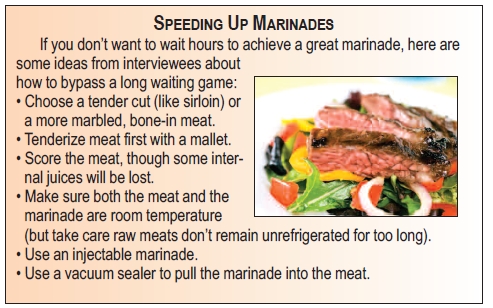 So retailers, pull it all together for your outdoor-loving clientele this summer. Show them all the green and healthy ways they can enjoy their next family cookout. WF
So retailers, pull it all together for your outdoor-loving clientele this summer. Show them all the green and healthy ways they can enjoy their next family cookout. WF
Published in WholeFoods Magazine, July 2012

